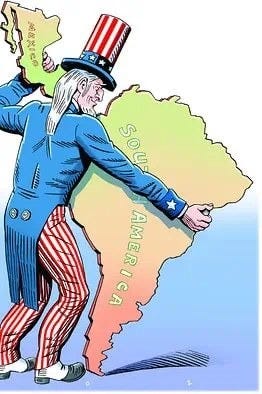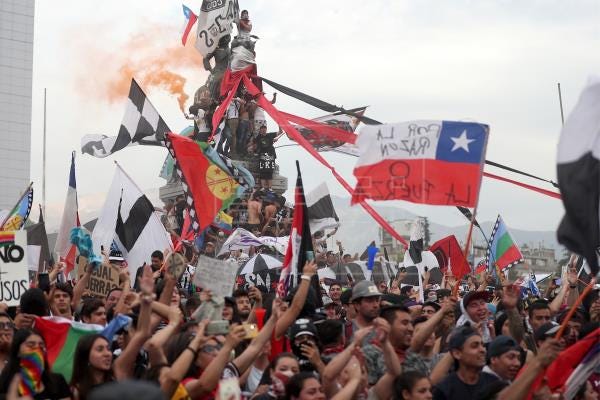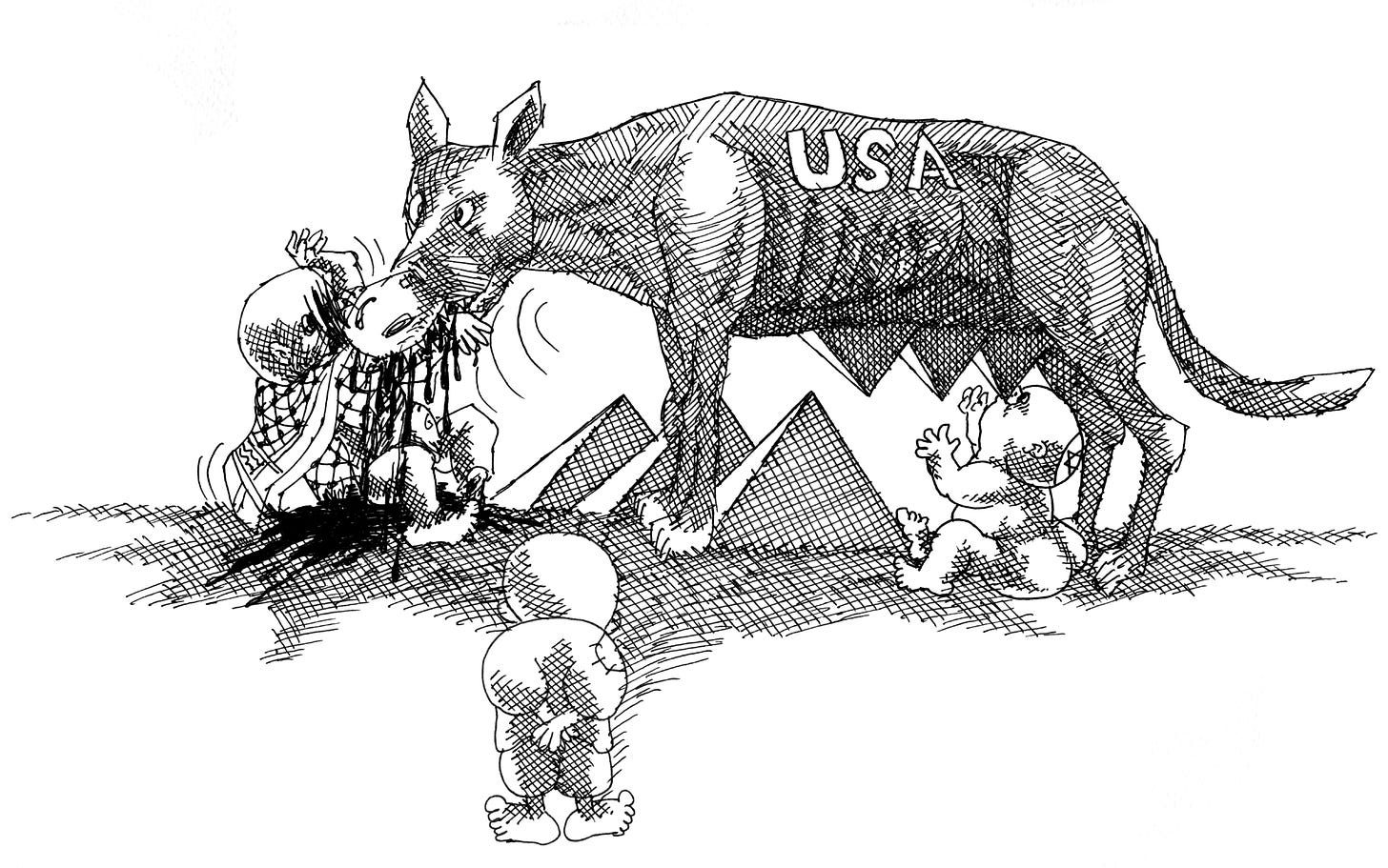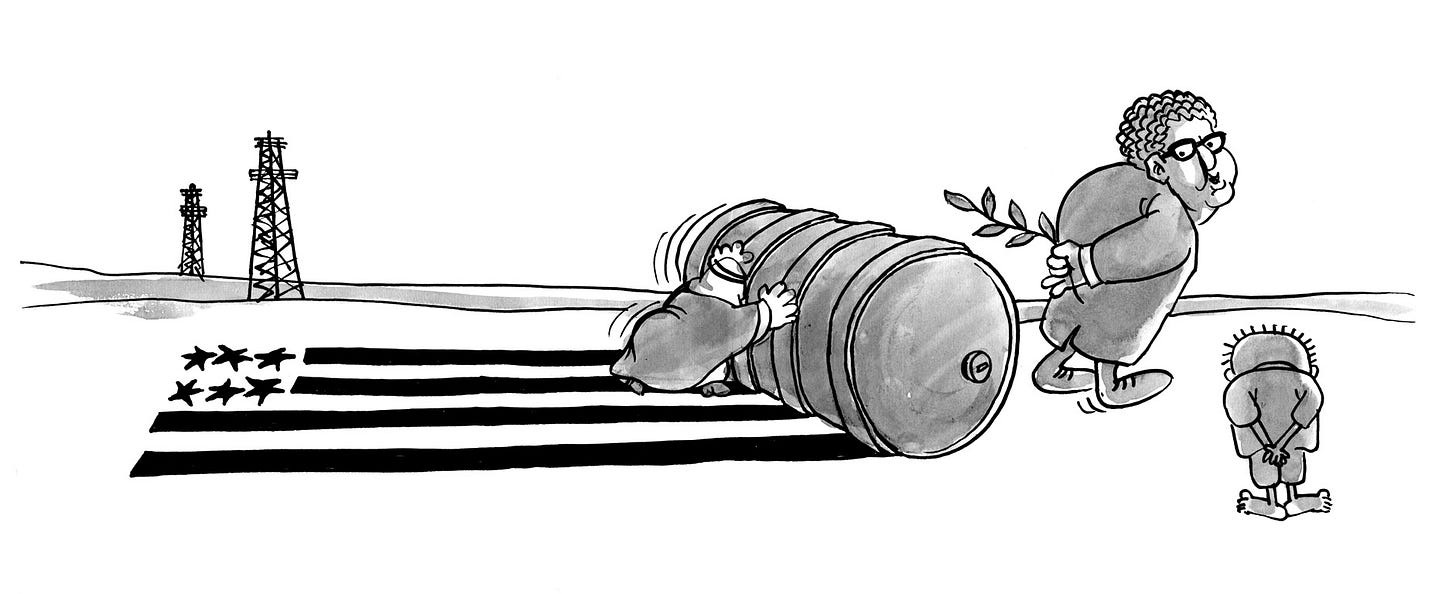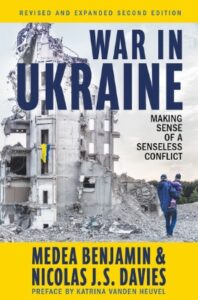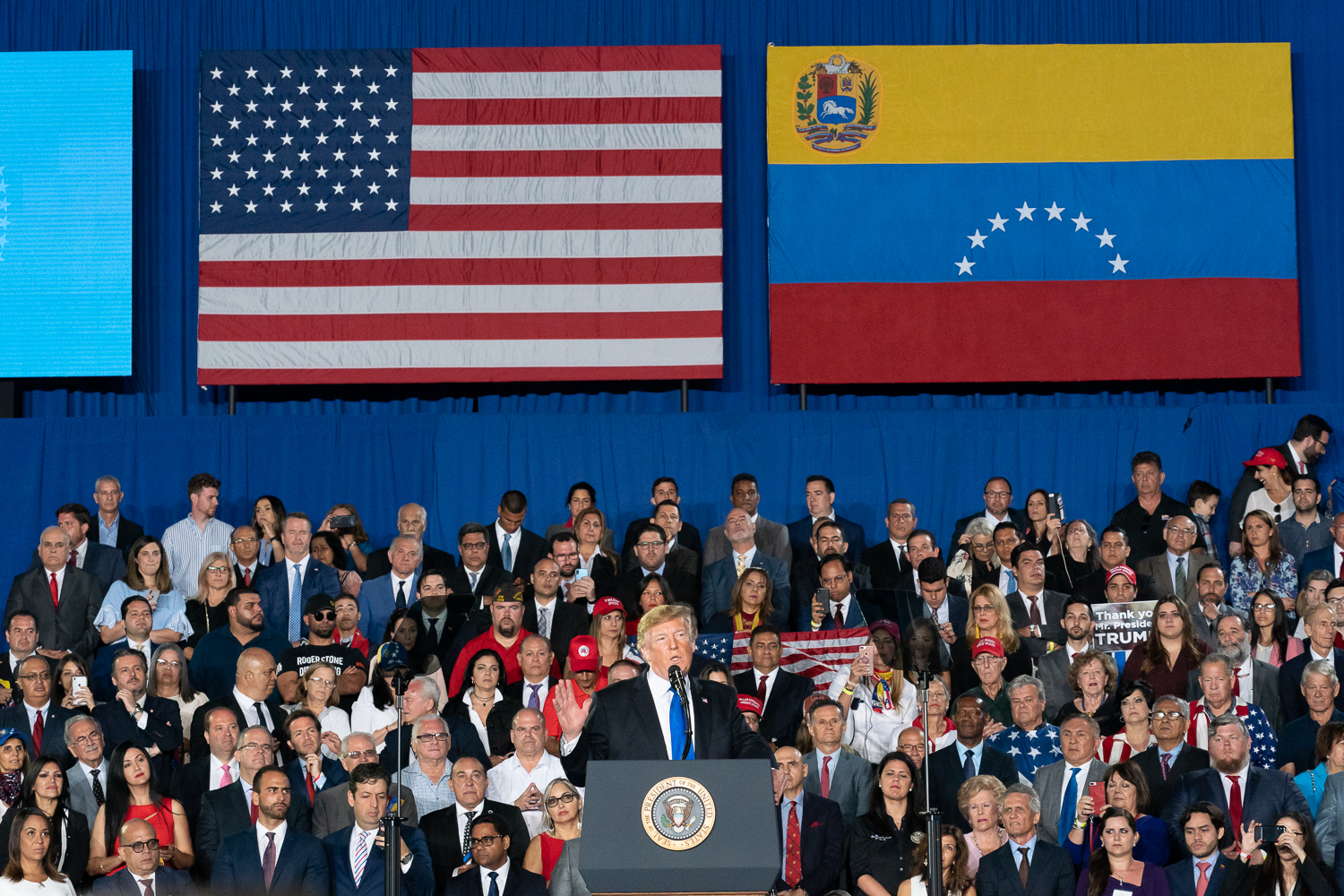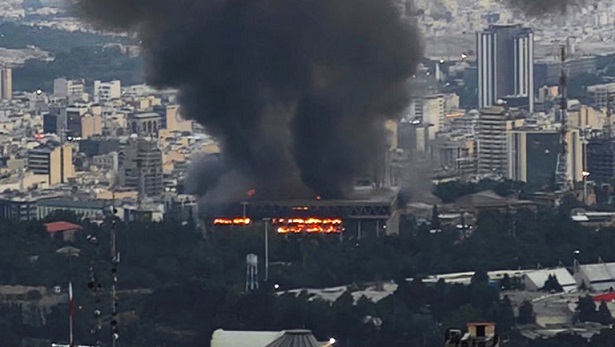Alexis de Tocqueville, nearly 200 years ago, cited extreme individualism as the potential Achilles heel of America democracy. He was struck by a pervasive self-regard that was a cardinal feature of the national personality – a fixed reference mark for how people saw the world and acted in it. The most evident risk, to his mind, was that this condition could erode the sense of common values which was the crucial software for the institutional hardware of public bodies. Tocqueville also was an uncommonly perceptive ‘psycho-anthropologist.’ He noted that there existed within the American psyche uneasy feelings of incompleteness rooted in frustrated ambition, status insecurities, an unhealthy preoccupation with a quest for a better place, a better time, something better despite unprecedented freedom and material well-being. In short, a sort of free-floating low-grade neurosis.
Here are excerpts from Alexis De Tocqueville, Democracy In America Book II, Translated by Henry Reeve Ed. Henry Steele Commager (Oxford University Press 1955):
Egotism is a vice as old as the world, which does not belong to form of society or another; individualism is of democratic origin. The conditions of life on an untrammeled continent have crystallized this sentiment…. Consequently, Americans believe that they owe nothing to any man. (368)
American individualism throws for ever each man back upon himself alone, and threatens in the end to confine him entirely within the solitude of his own heart” (Read smartphone) There, each citizen is habitually engaged in the contemplation of a very puny object, namely, himself. (213)
The individual’s sense of being unfulfilled is a hallmark of today’s American. It is more pronounced now than ever before.
A related cause is the absence of rites of passage, of marks of distinction, of settled status – now exacerbated by economic dislocation (the gig economy) – which deepen diffuse feelings of disappointment and discouragement. All the more so when we are subjected to graphic images of those who have “made it,” i.e. the celebrity culture along with the money mania.
A native of the United States clings to this world’s goods as if he were certain never to die; and he is so hasty in grasping all within his reach that one would suppose he was constantly afraid of not living long enough to enjoy them. He clutches everything, but holds nothing fast, and soon loosens his grip to pursue fresh gratifications. (396)
They encounter good fortune nearly everywhere, but not happiness. With them the desire for well-being has become an uneasy burning passion that keeps on growing even while it is being satisfied. (215)
BINGO!
The Darkening Horizon (579)
At the very end of Tocqueville’s second book, his guarded optimism about American democracy, and what it portends for the inexorable spread of democracy everywhere, yields to a different, troubling vision of the future. He vividly describes a benign dystopia:
In America I saw the freest men, placed in the happiest circumstances that the world affords; it seemed to me as if a cloud hung upon their brow, and I thought them serious and almost sad in their pleasure…. Endlessly they are going to seize it (happiness), and endlessly it escapes their grasp. They see it from close enough to know its charms, but they never get close enough to enjoy them, and they die before fully tasting its delights. These are the reason for the singular melancholy … they sometimes experience in the bosom of abundance, and for the disgust with life that often seizes them in the midst of their easy and tranquil existence.
The Pursuit of Happiness – to coin a phrase. Thereby, Tocqueville discerned the seeds of what has become the fatal, mutual reinforcing mix of Narcissism and Nihilism that have cleared the way for American Fascism.
This state of affairs was alleviated over time – by urbanization, by the influx of immigrants from other cultural backgrounds – Catholics and Jews from Eastern and Southern Europe; by revolutions in communication and transportation, and – above all – by the steady trend toward recognizing government as the custodian of nation well-being – society’s collective agent performing critical functions which, thereby, foster obligations and bonds that transcended individuals. The reactionary counter revolution of the past 40 years or so has entailed a frontal assault on those constructions and their attendant social ethos. Hard-headed special interests along with the dogmas they’ve spread have been the spearheads. Others have contributed. Democratic so-called reformers promoted Charter schools. Declarations made that “the era of big government is over” (Bill Clinton) in the name of ‘privatization.’ The cosseting of rapacious, predatory finance (Barack Obama). Academia has placed its oar in the water to propel thinking in the same direction: an economics profession that is wedding to an intolerant “market fundamentalist” model that presumes that it is human nature to live by utility calculations; prominent social philosophers who propagate the idea that we are programed to think only of oneself and one’s immediate narrow needs.
This essay addresses the last.
Altruism vs Selfishness
I.
What’s this all about? A high-powered team of psychologists from Yale and Harvard has made a splash with a well publicized claim that moral indignation is usually an affectation aimed at enhancing reputation and, thereby, gaining personal advantage. It is nothing more than a compulsive desire to proclaim how virtuous you are, to “advertise” yourself to others. Rarely does it have anything or little to do with moral responsibility or ethical concerns. Indignation over alleged wrongs and injustices is merely another form of self-righteousness whereby the insecure individual strives for a sense of worth by showing that (s)he is better than other people. The reputation for virtue thereby acquired is exploited to advance personal needs and wants. All of this, it is argued, accords with inherent human instincts and the survival of the fittest.
These radical assertions are based on an extensive research project well-funded by reputable sources, mainly the Templeton Foundation. The study is grounded in an elaborate set of contrived laboratory experiments whose relation to real world circumstances is purely coincidental. The accumulated testing data is then subject to statistical analysis. Results were published in a scholarly article that appeared in the distinguished journal Nature. The authors neatly explain their conclusion this way:
…an evolutionary mystery: Why would a selfless tendency like moral outrage result from the self’s process of evolution? One important piece of the answer is that expressing moral outrage actually does benefit you, in the long run, by improving your reputation…..We suggest that expressing moral outrage can serve as a form of personal advertisement. People who invest time and effort in condemning those who behave badly are trusted more.” That trust then can be exploited for personal gain/advancement – “without much care for what it means for others.
This is a specious argument rooted in assumptions about human nature and the evolutionary process that simply are untrue. Moreover, it reflects a philosophical bias toward fashionable varieties of the selfishness creed that is sweeping our society. Scholars are now engaged in justifying and propagating those pernicious doctrines – wittingly or otherwise. The Harvard/Yale psychologists give the game away without even realizing it by exposing their own distorted view of human behavior and society. They manifestly are creatures of their culture and their times.
Let us examine those biases. First, their conception of evolutionary dynamics is simplistic. Survival of the fittest entails more than a tooth-and-nail fight of all against all. There are collective, mutually supportive needs within groups of individuals that are imperatives for survival. Even a cursory knowledge of the mammal world as a whole makes this unmistakably clear – leaving aside homo sapiens for the moment. Most mammals are communal; they live in packs, herds, whatever. That applies to predators as well as to herbivores. Think of the wolf pack or lion pride – exemplars of an extended family. Its internal division-of-labor is associated with a sense of collective identity and collective interest. The male alpha role usually is shared by two, three or even four dominant males. Genetic identity of the progeny itself can be obscure.
Among mammals, survival instincts generate behavior that can extend beyond the directly instrumental, i.e. it becomes independent of the originating need. Hence, we have seen video evidence of how the maternal instinct can apply across clans – and even across species. It’s right there, in the wild. Most striking are those that show zoo gorillas coming to the rescue of toddlers who have fallen into the enclave and lifting them to their mothers – in one instance, a male gorilla. According to the ‘Pinker logic,” he immediately saw an opportunity to earn an extra big banana provision from the keeper impressed by his valorous act. Well, ….
In other words, the behavior driven by the survival imperative can lead to a generalized tendency to produce conduct that serves no direct survival need.
Consider this situation. An adult is walking on the beach off-season fully clothed. Scattered groups of people are enjoying the fall sunshine. The person in question sees that a toddler, escaping the care of his parents, has wandered into the water where he is about to be swept away by a wave. The stranger dashes into the surf to carry the child out of danger. Why? Self-promotion in the eyes of onlookers? Reward expected from grateful parents? Enhanced self-esteem from doing a life-saving good deed? The Harvard-Yale team most certainly would offer these explanations. What drivel! The obvious answer is that it was an instinctive action involving nothing of a self-referential nature.
Human social groups constitute many orders of magnitude of collective, mutually supportive living beyond these examples of mammalian solidarity. The most rudimentary Neolithic tribes lived a communal existence. We know little about their organization and modes of social functioning except from what has been observed in the Amazon Basin and the Highlands of Papua New Guinea. Some things are readily observable. One, the underlying principle was a sort of primitive communism. Two, to the extent that alpha male roles existed, they did not dictate fully the terms of genetic survival. Three, there were strong bonds and a deep sense of collective identity.
A stunning archeological find has revealed that at least some of these attributes were present even in Homo Erectus communities. It involves the skeleton of a female approximately 50 years old that shows severe physical infirmities – some seemingly congenital. The implication is that the woman could not have survived without attentive care from her family/group for a period of decades. In other words, the community felt bound to her welfare to a greater extent than does the state of Texas today toward its impoverished infirmed. That is devolution in the homeland of primitive Darwinian individualism.
The implication of this accumulated evidence is that the evolutionary dynamic is far more complex than the rather primitive understanding built into the Yale/Harvard thesis. Human beings have a more highly developed sense of communal well-being and its link to individual survival/advancement than that evident among hedge fund managers or careerist academics who implicitly seem to be the main outside-the-lab empirical reference points for these authors. Homo sapiens have the exceptional attribute of self-awareness along with an environmental awareness that includes the social environment. That leads to the formulation of codes of conduct that conform to the logic of evolutionary symbiosis.
Those codes of conduct, in turn, are intimately associated with the emergence of a sense of right-and-wrong. Ethics and practical benefit have become intertwined. Violation of fundamental ethics, in egregious ways, is perceived simultaneously as a practical danger to the community and an insult to its shared sense of identity. Those behavioral codes often are sacrilized – adding to their force by ritualizing them and imprinting them on the group’s collective consciousness. Hence, a specific act is condemned not only for that single transgression of a societal norm but also because it constitutes an implicit danger to the group’s entire normative structure. Indignation is the natural reaction to such a violation.
As persons mature, collective norms fuse with individual life experience to form an ethical character. Progressively over a life span, primitive personal needs and wants are incorporated into what has been called “the altruistic self’ wherein the ‘selfish’ and the collective are balanced. These well-established ideas have faded in the age of narcissism.
Then there is this uncomfortable fact of life. Millions of people experience feelings of moral outrage when they are alone – when there is no one to whom they might “advertise” themselves and on whom they might gain leverage. I guess that they may be “practicing” their outrage on the off-chance that they run into an editor of the NYT Week in Review in Zabar’s some Sunday morning. All of this is beyond the comprehension of the Harvard/Yale team. They prefer to see indignation as posturing – a calculated attempt to make oneself look good in the eyes of others. That judgment says more about the researchers than it does about human nature.
What they see as a puzzling “investment of time and energy” in condemning an “offense…that does not concern (them) directly” is in fact natural and healthy human behavior. The practical implications are profound. Should we celebrate that some of us still are able to feel moral outrage about a son or neighbor crippled in Falluja for the sake of George W. Bush’s low self-esteem, about seeing thousands of the nation’s children knowingly poisoned in Flint by Governor Snyder and other high officials, about dirty dealing on Wall Street that promises another financial collapse, about the American Psychological Association’s hidden program to instruct the CIA in the most effective torture techniques? Or, is the normal, emotionally well-adjusted thing to do instead constraining the indignation one might feel? Is it really the normal, survival oriented behavior to devote one’s energy to working out the latest insider trading deal or market rigging scheme over drinks, or plotting to elbow into retirement that colleague whose funding and doctoral students you covet – or, exercising admirable restraint in avoiding self “advertisement” by condemning your profession’s leaders abuse of their position?
We know which type will come out ahead in contemporary American society. What that means for the welfare and sustainability of humankind is quite a different question.
In effect, this scholarly quartet are formulating a behavioral model wherein the most advanced parts of the brain (cerebral cortex) that permit consciousness of one’s environment, and at the highest stage, self-consciousness, are servants of the primitive R-complex — or reptilian brain. The reptilian brain produces only one type of behavior: that driven by basic needs and wants. If all social actions serve individual needs in the struggle for survival of the fittest, then any social conduct that appears superficially altruistic or ethically driven is in fact selfish at its motivational core if properly interpreted.
This is an extremely important article. Not for its explanatory value; but for its near perfect representation of multiple pathologies in contemporary society that carry pernicious consequences.
There is an old Italian saying: Latin masks the ignorance of the Priest. So, today: digits mask the ignorance of the Social Scientist. It was said that German philosophers dove deeper than anyone else and came up muddier. Behavioral psychologists make the shallowest of dives and surface beaming with smug self-satisfaction.
*This is the argument of four highly reputable scholars from Yale and Harvard. Two are standard psychologists; two, who do behavioral research, are called ‘mathematical biologists.’ All four Professors are disciples of the distinguished Harvard Psychologist Steven Pinker who is the Johnstone Family Professor of Psychology. This prize-winning scholar has been named Humanist of the Year, Prospect magazine’s “The World’s Top 100 Public Intellectuals,” Foreign Policy’s “100 Global Thinkers,” and Time magazine’s “The 100 Most Influential People in the World Today.” Pinker characterizes this work of his proteges and collaborators as “brilliant.”
They were given premium space in the Sunday New York Times to present this radical reconceptualization of what behaviors are praiseworthy and which aren’t. At first glance, it might seem odd that our august newspaper of record would go out of its way to promote such a radical viewpoint – especially at a time when a greatly diminished capacity for moral indignation has left the American body politic drifting into precarious waters. Normally, the NYT devotes its Sunday sections to purveying trendy themes that titillate its readership. Sexuality in all its many forms, for example, which receives abundant attention from the Business Section to the Magazine. Or Style Sections. Or lifestyles of the Rich & Famous – interspersed of course with the occasional graphic photo spread on the wretched of the Earth.
Its Editors’ motivations are unknown. We can be quite sure, however, based on its record in recent years, that the Times was seeking to reassure and comfort rather than to provoke. The question, therefore, is what exactly were they trying to reassure us about? Well, likely it was the same peculiar anxiety that preoccupies the authors of this ultimately rather silly paean to smug complacency; that is, those who call us to account in observing a humane ethical standard are not serving our species’ well-being.
II. Rand & Altruism October 2014
Ayn Rand – of Fountainhead and Atlas Shrugged fame – regained prominence when one of her prize disciples, Alan Greenspan, proclaimed her as the inspiration for a way of thinking that brought the world financial system to wrack and ruin. Rand spawned a juvenile creed of unmitigated selfishness that resounded with young egoists who fantasized that they were ‘supermen’ who should distain the social ethics that enslaved lesser men. She, and her dogma, now have reemerged as the model for inchoate thoughts about the evil of government, and the virtue of getting rich at any cost – among other brilliant ideas for rescinding the social policies of the 20th century.
The phenomenon’s significance lies not in the anthropological curiosity item that is the sociopathic Randian sect. More compelling is its melding with atavistic elements of American tradition into a movement of the disaffected, the deluded, the status deprived, and the cynical which is endangering the humane decency of the country we have worked to perfect over 225 years. The sect’s component groupings, in their various modulations, having annexed the Republican Party, and are on the verge of seizing control of the entire federal government. Once in their hands, the levers of power will be used to restore the free-wheeling, government-lite America of the 19 century only in the economic sphere where the domination of financial elites will be consolidated. In the social and cultural spheres, they will be used to impose codes of conduct that cripple liberties. The latter was not the aspiration of Ayn Rand (she favored unrestricted abortion rights), but rather confirmation of the inescapable destination to which a mutant form of her doctrine leads when all sense of community is denigrated.
For narcissism is now the national religion. That is to say, a religion that recognizes only one sovereign power and worships at only one altar – the all-demanding and all-consuming self. Narcissism is dressed out in a multiplicity of styles – masquerading as enlightened Reform (doing away with the rights of salaried workers and their access to public services, deregulation, privatization); as Old Time religion (God and his prophet as a spiritual Swiss army knife that justifies prejudice and encourages fearful, sweaty egos in their relentless search for ‘meaning’); as family responsibility (looking after the extended Number 1 menaced by those anonymous forces who would steal your comfort and transfer it to the unworthy); as defense of a ‘Liberty’ for true, rugged individualistic Americans whose gun collection is the only thing that stands between freedom and Socialists, aliens, terrorists, and other assorted hobgoblins imagined by insecure and fevered personalities.
The extent to which a narcissistic perspective on life has permeated our consciousness is evident in the current discourse about ‘altruism.’ How do we explain something that is counter to common sense and direct experience? What social influences lead some people some of time to behave in this odd way? Is it religious dicta inscribed in holy books whose lessons have been drummed into us in houses of worship? It may be inborn in mothers sacrificing for their offspring but why should it include ‘others’ who are natural competitors of their progeny?
This mysterious thing called ‘altruism’ covers a wide range of behaviors: freely giving away money and goods (i.e. philanthropy); lending a helping hand to strangers; worrying and carrying about groups in society that you have no direct connection with; coming to the assistance of the vulnerable who could be viewed as burdens on productive members of society and/or simply the losers in the game of natural selection. These questions today are earnestly debated in serious journals, on the web, in scholarly circles, and in the Sunday Magazine of The New York Times – the ultimate arbitrator of upper middle-brow thinking.
The fundamental point is that the question is almost universally considered legitimate and puzzling. For it is widely taken as given that “altruism” is an aberration from the norm. In truth, it indeed has become an aberration in terms of how vast numbers of people relate to their fellows. We have lost track of who we are. We have lost track of human identity as a social being. We have lost track of our evolution as members of communities – immediate and abstracted. We overlook some elementary facts about ourselves.
Humans have an instinct to bond – in families, in extended families, in small tribal groupings, in larger tribes. We have a further capacity for empathy that extends beyond those groupings. It doesn’t take social learning, much less instruction, to feel the impulse to protect an endangered relation – or any other member of the species for that matter. In fact, these instincts are readily observable among higher mammals, primates surely and also others, e.g. an elephant herd, a lion pride. Even a rogue elephant, the pachyderm counterpart to the Randites’ ‘superman,’ has been filmed coming to the rescue of a stray baby stalked by predators — oblivious to the risk he is running the risk of weakening the moral fiber of the elephant community by this unseemly act of altruism. Yet for many, similar behavior among humans is interpreted as requiring a special explanation. They get nothing from Animal Kingdom while grasping for convenient verities in the prolix pages of Ayn Rand and the like.
This narcissism grounded pathology is most widespread in the United States. More qualified variations are surfacing in Western Europe, especially within the copy-cat governments of Britain’s current and recent Prime Ministers. But only a doctrinaire few over there can contemplate repealing the great advances of the past century that have extended the logic and sentiment of human solidarity to entire countries. Only a few can imagine a society that upends the admonition that “humanity is the ultimate measure of what we do” while embracing a doctrine of all against all with the privileged getting a head start. Only a few can see no connection between implementing a plan of greedy individualism and the reversion of relations among countries to the conflict mode of yesteryear. America, unfortunately, is the trailblazer and pacesetter — and it is American politicians and journalists and intellectuals who are having a powerful influence on how the rest of the world thinks about all this.
That is a great pity.
The developed world, in the second half of the 20th century, achieved something historic; something that only visionaries in an earlier era could have imagined. Societies build on practical principles of mutual obligation and individual dignity enjoying unprecedented domestic peace and material well-being. That required acts of intellectual, ethical and politically creativity. Positive inertia kept them going. For the past 40 years or so, that positive inertia has given way to a combination of complacency about the fruits of our great achievement and disparagement of its mainspring.
Today, especially in the United States, a new class of ambitious strivers are making their mark by destruction – not by creation. It is an odd alliance of the powerful and power hungry, the insecure comforted by fanciful nostrums, and the opportunists. The last is a broad, heteroclite assemblage – in academia, media, politics and the professions. They will have the most to answer for as the reactionary project of destruction progresses.
ENDNOTE:
The post
Altruism vs Selfishness first appeared on
Dissident Voice.
1 Jillian J. Jordan, Moshe Hoffman, Paul Bloom, & David G. Rand “Third-party punishment as a costly signal of trustworthiness” Nature, Volume: 530, (25 February 2016), p 473–476.
This post was originally published on Dissident Voice.

